The Ultimate Travel Guide For Riga
This page contains affiliate links. This means that I get a commission if you purchase through my links, at no cost to you.
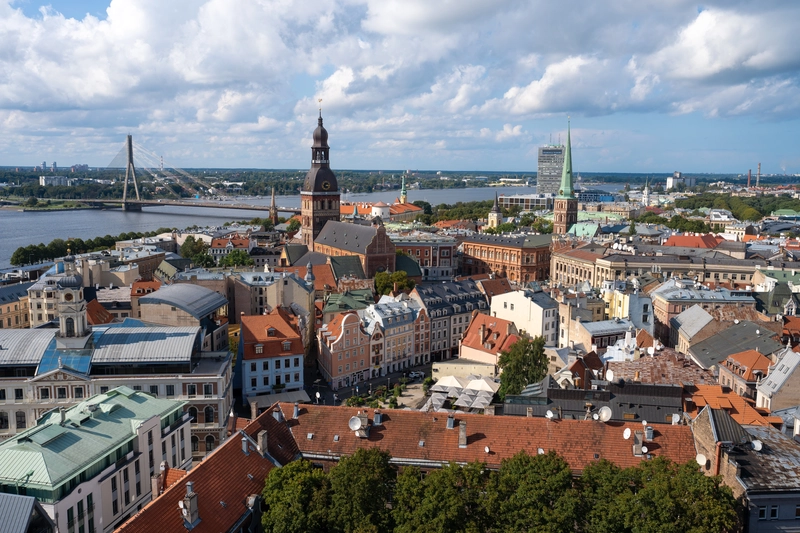
Welcome to Riga, the captivating capital of Latvia. Riga, being the largest city in Latvia, has managed to maintain a charming small-town atmosphere despite being home to almost half of Latvia's population. It seamlessly blends the richness of its past with the vibrancy of the present.
Picture yourself strolling along the enchanting cobblestone streets of the medieval Old Town, where every building tells a story. However, it is when you encounter Riga's Art Nouveau architecture that your perspective on architectural beauty will be forever transformed. Personally, I never had much interest in architecture before visiting Riga – it completely changed my perspective. At every turn, you'll find beautiful Art Nouveau buildings and there is even an entire neighborhood dedicated to this captivating style.
So in this travel guide, I'll take you to the best places in Riga. We'll start with the vibrant Old Town – which is my favorite part of Riga – and I will show my favorite places, from the bustling Riga Central Market for some Latvian food, to the peaceful Bastejkalna Park for some tranquility. And let's not forget all the fascinating museums that shed light on Latvia's fascinating history.
- Table of Contents
- History of Riga
- Things to see and do in Riga
- Old Town of Riga (Vecrīga)
- Town Hall Square
- House of the Blackheads
- The Three Brothers
- Swedish Gate
- Freedom Monument
- Bastejkalna Park
- Latvian War Museum
- The Museum of the Occupation of Latvia
- The Corner House (KGB Museum)
- St. Peter's Church
- Riga Cathedral
- Nativity of Christ Cathedral
- Riga Central Market (Rigas Centraltirgus)
- Alberta Street (Alberta iela)
- Art Nouveau Museum
- Daytrip to Jūrmala
- Local food in Riga
- Traveling to Riga
- Accommodations in Riga
- Public Transport in Riga
- Conclusion
- Frequently Asked Questions
- What is the best time to travel to Riga?
- What currency does Latvia use?
- What language do they speak in Riga?
- Are credit cards accepted in Latvia?
- Is Riga expensive?
- Is Riga a safe city?
- Budget Breakdown
History of Riga
Riga has a fascinating history that spans centuries. It traces its roots back to ancient Baltic tribes who settled along the banks of the Daugava River. The Teutonic Knights played a crucial role in Riga's development by constructing a fortress in the 13th century, which propelled the city into becoming an important trading hub within the Hanseatic League.
Throughout its history, Riga underwent various changes in power, from Swedish and Polish rule to becoming part of the Russian Empire. This diverse heritage has left lasting imprints on Riga's architecture and culture.
The 20th century brought significant transformations as well. In 1918, Latvian independence was officially declared right in the heart of the city. The years between the two World Wars were like a golden age for Riga, with arts and culture flourishing, and the economy booming.
But, it wasn't all sunshine and rainbows. Riga had to endure some tough times during World War II. It went through Soviet rule, then Nazi occupation, and later, more Soviet rule.
In 1991, Latvia regained independence from the Soviet Union and reinstated Riga as its capital. This era marked a revival of Latvian culture along with economic development and democratic reforms.
Fast forward to today, and Riga is standing tall and proud as a lively European capital. It has a stunning Old Town, beautiful Art Nouveau buildings, and a cultural and economic scene that's thriving. This city knows how to keep the best of its past close to its heart while looking forward to a super exciting future as a vibrant hub of Baltic culture and creativity.
Things to see and do in Riga
Riga is a treasure trove of fascinating attractions that give you a peek into its incredible history, architecture, and culture. I have put together a special list of places and activities you absolutely shouldn't miss when you're in town. Just keep in mind that opening hours can sometimes change due to holidays, events, or other unexpected stuff, so I recommend double-checking the official websites before you head over, just to make sure you've got the latest info. That way, you won't miss out on any of the fun!
Old Town of Riga (Vecrīga)
Get ready to soak up the enchanting vibes of Riga's historic center. It's like a journey back in time as you wander through the cobblestone streets and get lost in the stories told by the incredible architecture. Keep an eye out for iconic spots like the Riga Cathedral and the House of the Blackheads.
And when your feet need a break, don't worry – there are tons of cozy cafes and restaurants just waiting to satisfy your taste buds. Whether you're in the mood for local flavors or international dishes, they've got you covered. There are plenty of souvenir shops too, where you can snag some unique Latvian handicrafts to remember your trip by.

Town Hall Square
Town Hall Square is a place that's not just historic but also buzzing with life. This is the place where all the walking tours start, so it's always crowded and there are often street musicians playing — at least in summer. It has also been a key player in shaping Riga's story, and it's pretty impressive.
As the name already gave it away, you can find the Riga Town Hall here — which unfortunately is not open to the public. And don't forget to check out the iconic Roland Statue.
Another building you cannot miss is the House of the Blackheads, an impressive building that combines Gothic and Renaissance architecture — which has a big role in Riga's history.
The Town Hall Square isn't just another pretty square; it's where the action happens. Festivals and events make this place come alive, and you'll feel that vibrant energy in the air. Imagine witnessing a live show from a Latvian band surrounded by beautiful architecture.
Town Hall Square is perfect for taking photos, unwinding, and getting a taste of some Latvian culture.

House of the Blackheads
Set right in the heart of Riga's Old Town, the House of the Blackheads is a jaw-dropping masterpiece of Gothic and Renaissance architecture. Once upon a time, it was home to the Brotherhood of Blackheads, a group of unmarried merchants and shipowners. Their cultural flair is practically etched into the building's ornate exterior.
The building originates from 1334 but was heavily damaged during the wars. The Soviets eventually bulldozed it, but it was rebuilt between 1996 and 1999. Only the basement is original.
The House of the Blackheads is also a hub for cultural events and exhibitions that let you soak up its rich history and get a deeper understanding of Riga's past, influenced by these influential merchant guilds. So, if you're planning a visit, remember that opening hours might shift a bit, but typically, you can swing by between 10 AM and 6 PM. It is closed on Mondays.
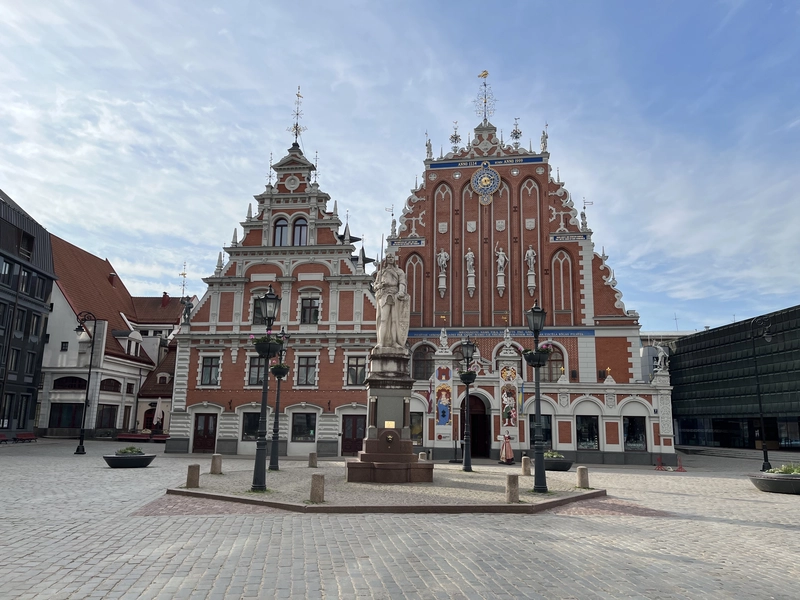
The Three Brothers
Now, when you explore the narrow streets of Riga, you'll stumble upon the Three Brothers. These are no ordinary siblings; they're three historic buildings, each showcasing a different architectural style – Gothic, Renaissance, and Baroque. They're like a time machine that lets you see how Riga's architecture has evolved over the years, offering a window into the city's past.
These Three Brothers are believed to be the oldest residential complex in Riga. They're like a living history book, telling tales of the city's diverse past and preserving its architectural legacy. Today they house the Latvian Museum of Architecture. Typically, you can visit from 10 AM to 6 PM, but do check because opening hours might change a bit. It is closed on Mondays.
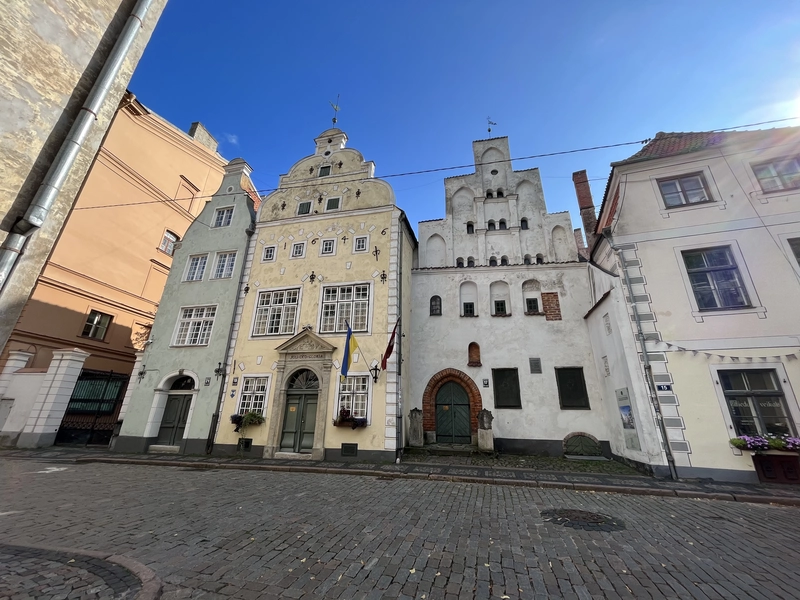
Swedish Gate
The Swedish Gate is a link to the city's medieval past, a powerful reminder of where it all began and how those roots still hold strong today.
This grand stone arch, once a part of the ancient city walls, has an air of mystery and fascination. It's a window into the city's defense strategies and how the landscape has transformed over the centuries. Walking through this gate is like stepping back in time, and you can almost hear the echoes of the bustling activity that once filled this passageway – or the young woman that was locked up inside the wall, although there is no proof that this has ever happened.
Beyond its historical importance, the Swedish Gate is a visual symbol of Riga's resilience throughout the ages. It's a testament to how the city has evolved from its medieval beginnings to the vibrant place it is today.
Freedom Monument
Right at the center of Riga, you'll find the Freedom Monument – a powerful symbol of Latvia's independence and national pride. It's hard to miss, Milda, a striking female figure, standing tall to represent freedom and the nation's spirit. This monument is a work of art, covered in sculptures and reliefs that hold deep historical meaning for Latvians who've lived through all kinds of political changes. It's a tribute to their unwavering spirit.
It's a living symbol that keeps inspiring and bringing people together, whether you're a local or just passing through as a tourist. If you're in Riga, this landmark is an absolute must-see.
One time when I walked towards the monument, I saw an older woman bowing for the monument. This shows how important Milda is for the locals. They don't take their freedom for granted.
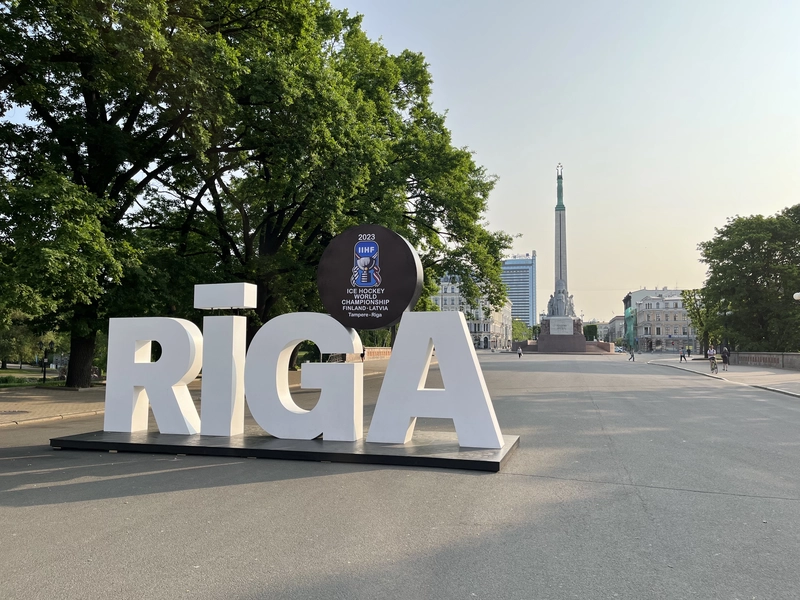
Bastejkalna Park
Right next to the Freedom Monument is Bastejkalna Park. This park is a tranquil oasis in the middle of all the city hustle and bustle. Imagine winding paths, lush greenery, and a serene canal – it's a perfect spot for some peace and quiet. And it's not just nature at its best; the park's also got sculptures and beautiful little bridges – like the Love Bridge – that add to its charm.
Bastejkalna Park is conveniently close to all sorts of historical sites and cultural attractions. That means you can take a leisurely stroll, have a quiet picnic, and still be within reach of all the cool stuff in the city. So, it's kind of like getting the best of both worlds.
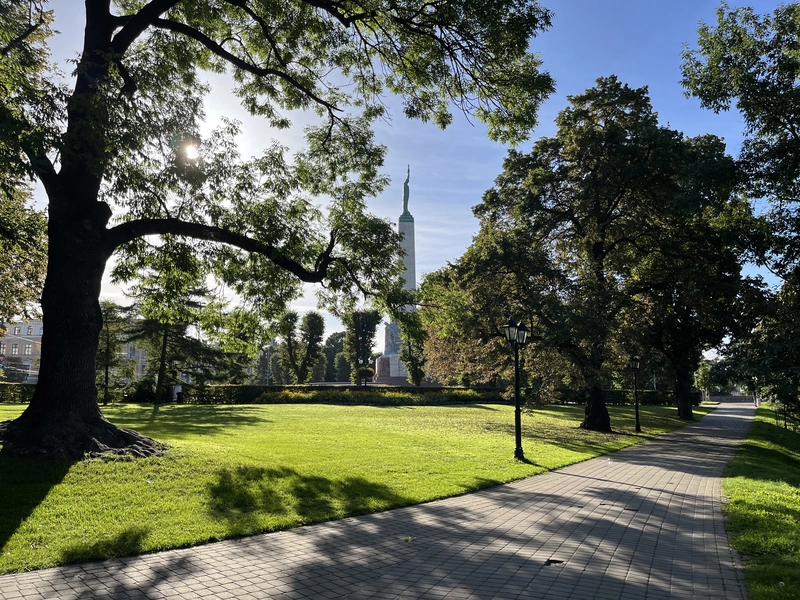
Latvian War Museum
The Latvian War Museum stands as a tribute to the military history of Latvia and its relentless fight for independence. It is housed in the historic Powder Tower (Pulvertornis), and it's a captivating journey through Latvia's wartime experiences, from ancient battles to more recent conflicts.
Inside, you'll find a great collection of artifacts, weapons, uniforms, and documents that shed light on the bravery and sacrifices of Latvian soldiers throughout the years. A visit to the Latvian War Museum will give you a profound understanding of the nation's resilience and unwavering commitment to safeguarding its sovereignty.
The opening hours can sometimes change, but typically, you can drop by from 10 AM to 6 PM. Keep in mind that it's closed on Mondays and Tuesdays.

The Museum of the Occupation of Latvia
The Museum of the Occupation of Latvia stands as a solemn tribute to the country's tumultuous history during periods of foreign occupation. It's like a powerful and necessary reminder of those challenging times.
Inside, the museum offers a thought-provoking journey through its impactful exhibitions, artifacts, and personal stories. It immerses visitors in Latvia's history under both Nazi and Soviet rule, shedding light on the resilience and sacrifices of its people. This isn't just a history lesson; it's an opportunity for contemplation about the unwavering spirit of Latvians and the vital importance of preserving freedom and human rights.
The museum serves as a testament to Latvia's dedication to remembering and learning from its past. It's a must-visit destination for anyone who wants to understand Latvia's path to independence and its strong commitment to democratic values. While the opening hours can sometimes shift, typically, it's open from 11 AM to 5 PM but closed on Mondays.
The Corner House (KGB Museum)
The Corner House, known as Stūra Māja by locals, is a place deeply etched in Latvia's history. Originally constructed as an apartment complex in the early 1900s, it later became a symbol of oppression during the dark days of Soviet occupation. It became the Latvian headquarters of the KGB – the Soviet Union's secret police force – and became a place of interrogations, imprisonment, and even executions of political dissidents and those deemed enemies of the state.
Today, the Corner House has been transformed into a museum. It's a solemn reminder of the brutal times Latvia endured under Soviet rule and the tremendous suffering its people went through. Visitors can explore various exhibits that shed light on the tactics used by the Soviet regime, the stories of brave individuals who resisted, and Latvia's relentless fight for independence.
Visiting the Corner House and the Museum of Occupation can be emotionally challenging, but it's a wellspring of knowledge about Latvia's history and its unyielding commitment to democratic values despite facing suppression. It's a vital destination for those who want to grasp Latvia's past and witness its ongoing dedication to safeguarding democratic principles.
The Corner House is open daily from 10:30 AM to 5:30 PM, but remember, entry is only possible through a guided tour, and you can grab your tickets online. It's a popular spot, so planning your visit is a smart move if you want to secure a spot. The downstairs exhibition, which tells the building's history through text and photographs, is free of charge.

St. Peter's Church
St. Peter's Church is more than just a church; it's an architectural masterpiece that's a magnet for visitors. You can't miss its majestic spire, and there's so much history here. But here's the cool part – if you're up for a bit of adventure, you can climb up the tower. From up there, you get these jaw-dropping panoramic views of the city and the Daugava River.
When you step inside, you'll be greeted by intricate decorations and artifacts that tell the story of Riga's past. So, visiting St. Peter's Church isn't just about history; it's also about getting these incredible views that'll make your jaw drop.
Just keep in mind that opening hours can change a bit, but typically, you can check it out from 10 AM to 6 PM.

Riga Cathedral
Now, let's go to the Riga Cathedral, right in the heart of the city – a true architectural gem with Gothic design. With its impressive spires and intricate interior details, this place is a treasure chest. Inside, you'll find a magnificent organ and some stunning religious artwork.
This cathedral is a symbol of Riga, and visiting it is like diving deep into centuries of history, art, and spirituality. It's more than just a building; it's a testament to the city's rich cultural heritage. If you're in Riga, it's a must-visit spot.
Typically, you can visit Riga Cathedral from 10 AM to 5 PM (on Saturdays from 10 AM to 4 PM and Sundays from 12 PM to 4 PM).

Nativity of Christ Cathedral
The Nativity of Christ Cathedral in Riga is an absolute gem of Russian Orthodox architecture. The golden domes and intricate decorations are nothing short of remarkable. When you step inside, you'll be greeted by breathtaking iconography and religious artworks, offering a glimpse into the spiritual and artistic heritage of the city. If you're someone interested in faith, culture, and architecture, this is an essential visit. You can usually explore it from 8 AM to 6 PM, so make sure to include it in your Riga itinerary.

Riga Central Market (Rigas Centraltirgus)
Riga Central Market is no ordinary market – it's one of the largest and most vibrant in all of Europe. It's a full-blown experience, letting you dive headfirst into the local food scene and culture. What makes it even cooler is that it's housed in five historic pavilions that used to be zeppelin hangars. You'll find a stunning variety of fresh produce, meats, dairy, and even handcrafted stuff.
As soon as you step in, you'll be hit by amazing aromas – and not-so-amazing aromas – and a rainbow of colors. It's a place to explore, chat with the friendly vendors, and, most importantly, taste the local flavors. From mouthwatering pastries to delectable smoked meats, Riga Central Market is a treasure trove of Latvian cuisine.
But here's a pro tip: if you want to take your experience up a notch, consider joining a local guide on a food tour. They'll show you the ropes, share cool stories about the market's history, introduce you to hidden gems, and help you understand Latvian gastronomy on a deeper level. That way, your visit becomes this unforgettable journey of flavors and culture.
Just a heads up, opening hours can vary a bit, but typically, the market welcomes visitors from early morning until late afternoon. I learned that the market sometimes closes for sanitary reasons.
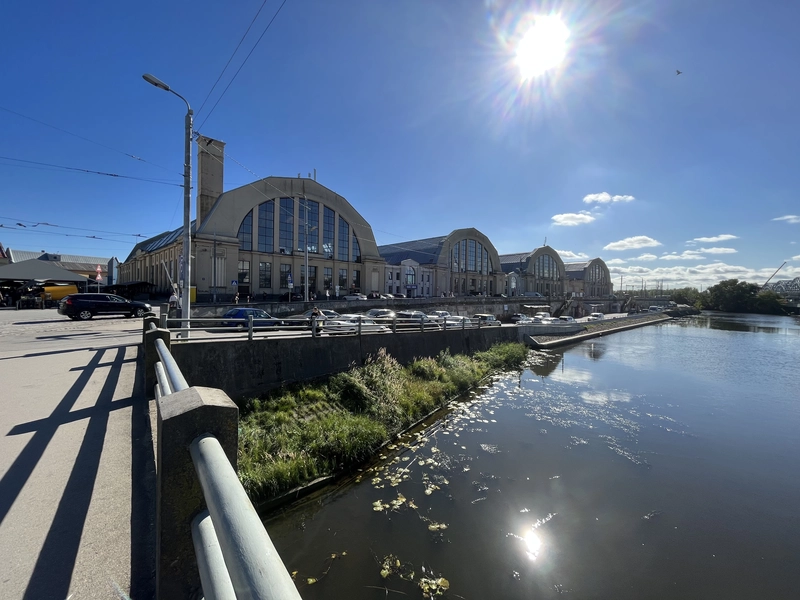
Alberta Street (Alberta iela)
Renowned as an iconic street in Riga, Alberta Street boasts exceptional examples of Art Nouveau architecture. Alberta Street showcases its influence on the artistic movement with its meticulously decorated buildings, adorned with intricate facades and ornate details. It provides a captivating experience for architecture enthusiasts and those interested in exploring Riga's rich cultural and artistic heritage through its exceptional structures.

Art Nouveau Museum
Prepare to be transported to the captivating world of the influential Art Nouveau movement at the Art Nouveau Museum in Riga. This museum isn't your typical one; it's set up in an actual apartment that's a time machine to the past. Here, you can dive headfirst into the intricate designs of this artistic era.
From the furniture to the decor, you'll be surrounded by opulence and innovation. But it's not just about aesthetics; it's a chance to understand how this movement shaped Riga's architectural landscape. As you wander through these meticulously preserved rooms, you'll not only admire the beauty but also get a feel for the social and cultural vibes that made this period so remarkable.
The Art Nouveau Museum is a real treat for design enthusiasts and history buffs alike. Just keep in mind that the operating hours can change a bit, but usually, you can drop by from 10 AM to 6 PM.
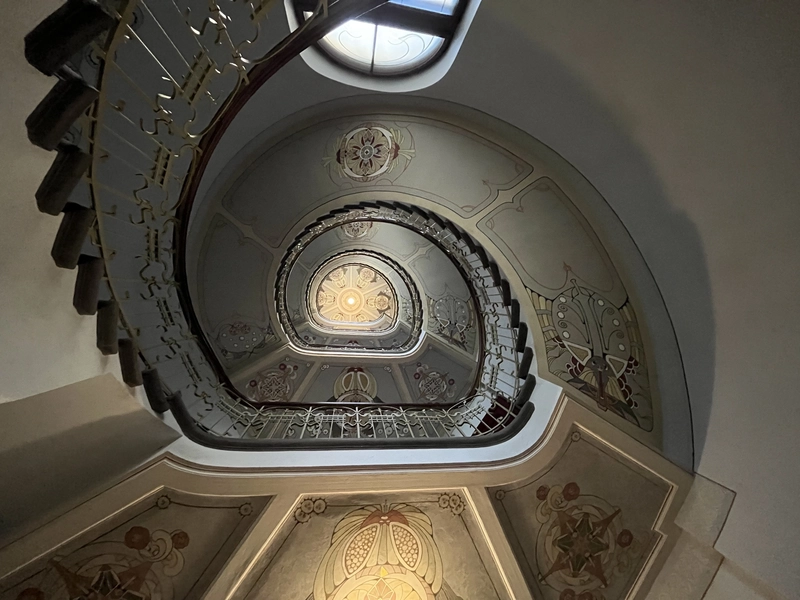
Daytrip to Jūrmala
Jūrmala, a charming coastal town close to Riga, is a cherished destination that both locals and tourists love. It's all about those unspoiled beaches and sea breezes that create a serene and picturesque retreat from the hustle and bustle of city life.
But Jūrmala isn't just a pretty town; it has a rich history as a spa town. For centuries, people have been coming here for the healing mineral springs and therapeutic mud. You can enjoy spa treatments, experience wellness retreats, or just relax at one of the many wellness centers and sanatoriums in town.
Jūrmala's architecture is a real gem too, with all those captivating wooden houses decked out in intricate designs that reflect the town's unique cultural heritage. They call it "Jūrmala's wooden lace," and it's truly enchanting to explore.

Local food in Riga
Riga's food scene is a delightful blend of traditional flavors, showcasing the rich culinary heritage of Latvia. But what makes it even more exciting is how it's embraced influences from all over the world. You can expect everything from comforting, hearty meals to exquisite local delicacies. Don't miss the chance to explore and taste your way through the remarkable local cuisine in Riga while you are there.
Gray Peas with Bacon (Pelēkie zirņi ar speķi)
A beloved traditional Latvian dish, tender gray peas cooked with onions, typically served alongside crispy bacon. This simple yet flavorful creation beautifully exemplifies the utilization of locally sourced ingredients. It's a taste of Latvian comfort and tradition, a dish that warms the heart and satisfies the palate.

Latvian Rye Bread (Rupjmaize)
An integral element of Latvian cuisine, Latvian rye bread is renowned for its dense texture and robust flavor profile. Often enjoyed with butter or various delectable toppings, it holds a special place in locals' hearts.

Latvian Honey Cake (Medus kūka)
This cake has multiple layers and is prepared using honey, sour cream, and spices. It's a delightful dessert that people often indulge in during special celebrations.
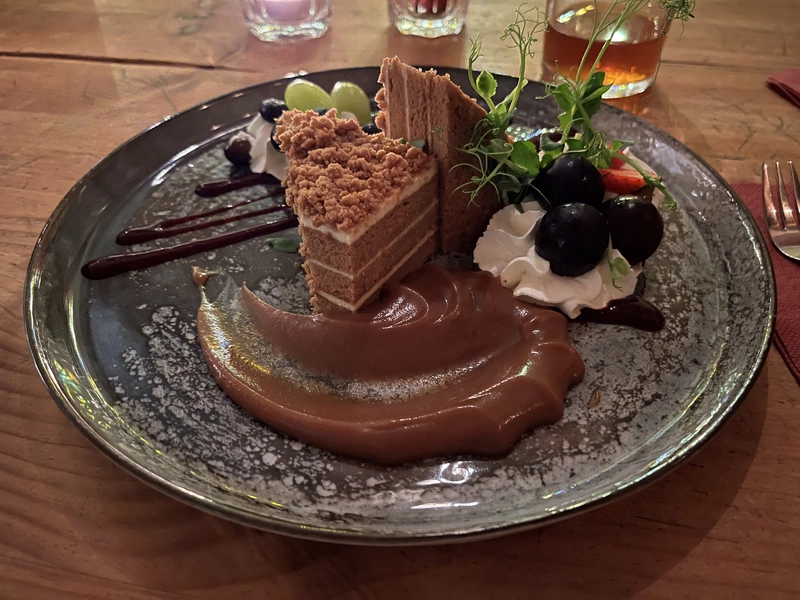
Latvian Bread Soup (Maizes zupa)
In Latvia, there is a traditional and comforting dish called "Maizes zupa," which is Latvian bread soup. It is particularly enjoyed during the colder months, showcasing the rich culinary heritage of Latvia. The soup's main ingredients are simple yet flavorful, mainly consisting of rye bread.

Sour Cabbage Soup (Skābeņu zupa)
This delightful soup combines sauerkraut, potatoes, carrots and occasionally meat. It's a comforting and satisfying dish that is particularly enjoyed during the colder months.
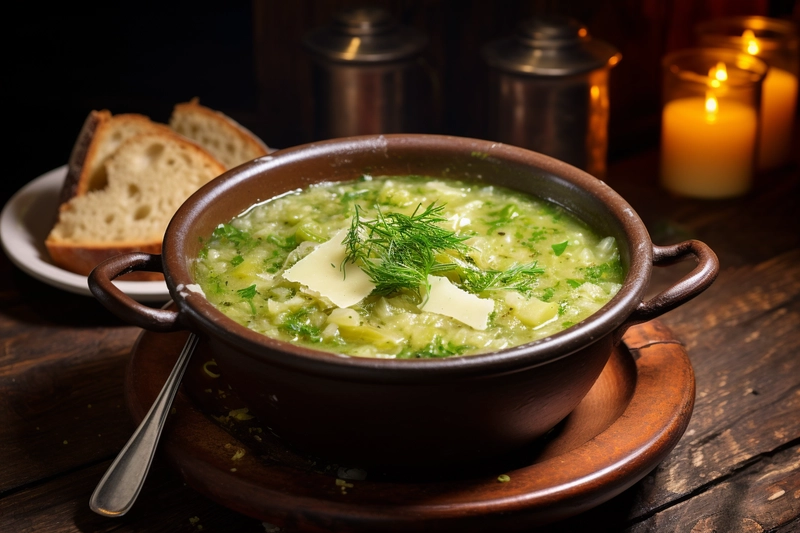
Potato Pancakes (Rasols)
A cherished Latvian delicacy, potato pancakes are often served as a side dish or appetizer. They're created by grating potatoes and mixing them with eggs, onions, and flour before frying them to a crispy perfection.
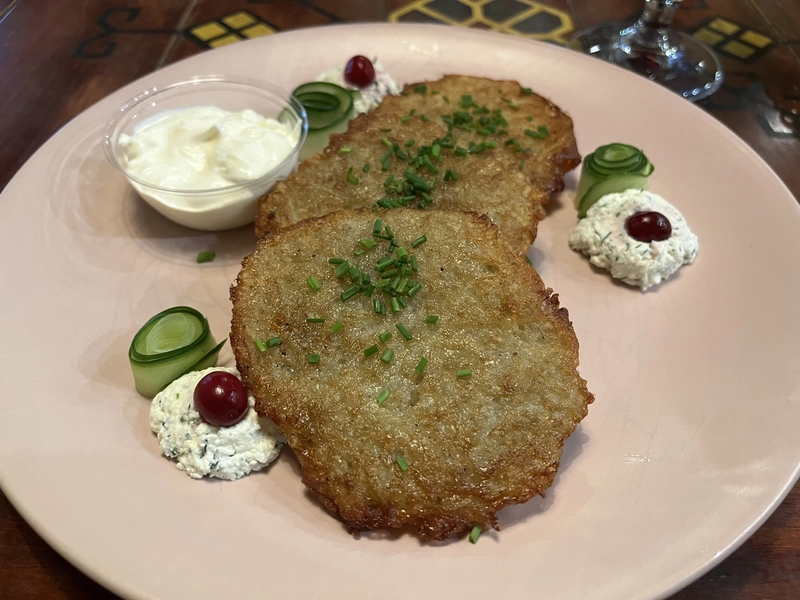
Sweet Pastries (Pīrāgi)
Pīrāgi are delectable pastries filled with bacon, onion, ham and cheese, mushrooms, and occasionally cabbage. They are a beloved snack or appetizer that brings joy during festive celebrations.
Cepelinai (Zeppelins)
While not exclusively associated with Latvia alone, cepelinai holds significant recognition in Latvia as a well-loved dish. They are big dumplings made with potatoes and filled with meat, usually served alongside a rich and creamy sauce.
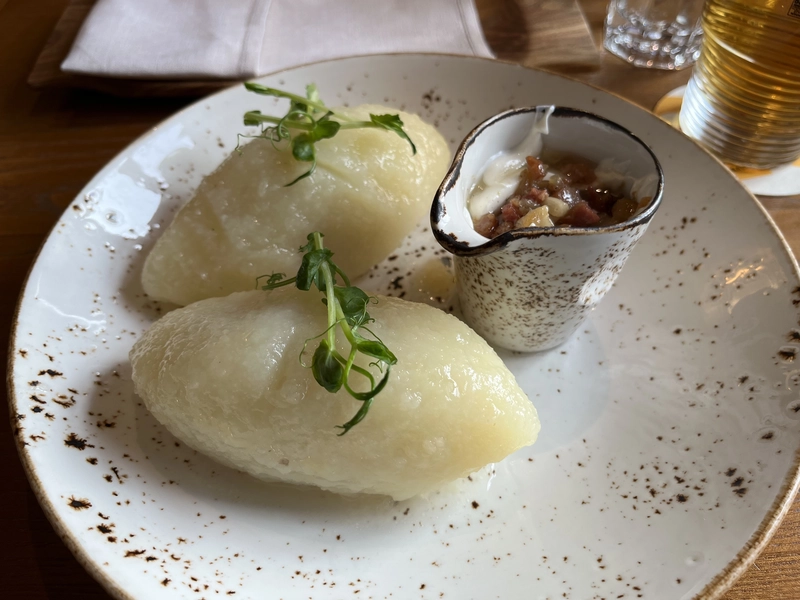
Smoked Fish
Given its proximity to the Baltic Sea, Riga offers an enticing variety of smoked fish dishes ranging from smoked herring to salmon and sprats. Smoked fish is commonly accompanied by potatoes, bread, or incorporated into refreshing salads.
Riga Black Balsam
Although not a culinary creation per se, Riga Black Balsam is a herbal liqueur originating from Riga. Crafted from a blend of diverse herbs, spices, and natural ingredients, it is frequently savored as an after-dinner digestif or utilized in cocktails. There are a few different options available; the original version has an alcohol content of 45%, while the black currant and cherry versions have a slightly lower alcohol content of 30%.
Fun fact: my favorite Black Balsam is the original. The other ones are too sweet for me. But with an alcohol percentage of 45%, there are not a lot of tourists that actually like this one. I got some weird looks whenever I ordered an original. Have you tried it? I'm curious which one is your favorite. Let me know in the comments.
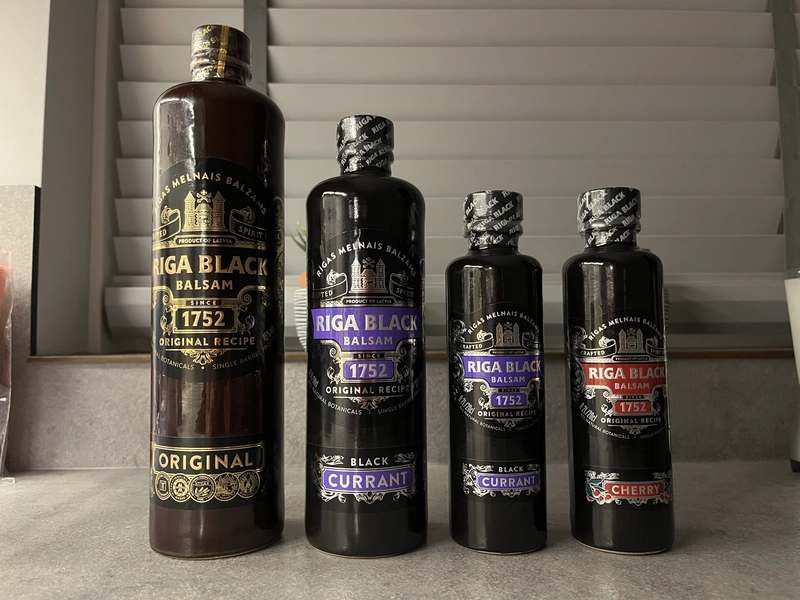
Traveling to Riga
When it comes to traveling to Riga, there are plenty of options available for different preferences, budgets, and travel styles. Let's explore a few ways you can reach this charming Baltic city.
Traveling to Riga by plane
Riga International Airport (RIX) is the main gateway and one of the busiest airports in the Baltic region. It serves both domestic and international flights, making it a convenient choice for travelers coming from different parts of the world. You have the flexibility to select direct or connecting flights offered by major airlines based on your preferred route and schedule.

Traveling to Riga by train
Riga boasts a well-connected railway network that provides easy access to neighboring countries like Estonia, Lithuania, and Russia. International trains offer comfortable and scenic journeys where you can unwind while admiring the beautiful landscapes as you approach Latvia's capital city. However, please note that due to railway track differences, there are no direct trains between the Baltics and the rest of the European Union.
There is significant construction activity taking place near the Riga train station to improve connections to other parts of the European Union. In the future, the existing train station will be replaced by a new and modern one. This ambitious project, known as Rail Baltica, is intended to seamlessly integrate the Baltic states into the wider European rail network, providing more convenient and efficient travel options for both residents and visitors. This will further improve the accessibility of Riga and the entire Baltic region.
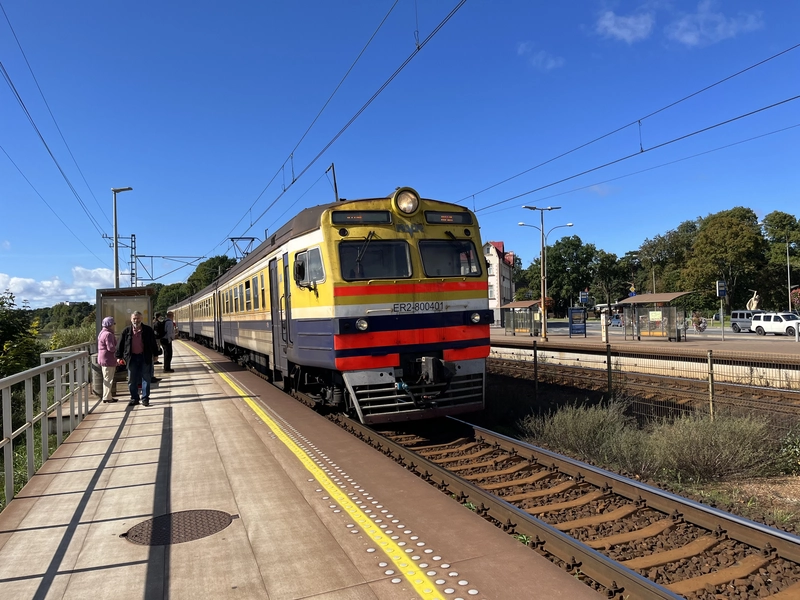
Traveling to Riga by bus
If you're looking for an affordable and flexible way to travel, long-distance buses are another excellent option for getting to Riga. Several bus companies operate routes to Riga from various European cities. These modern coaches are equipped with Wi-Fi access, power outlets, and comfortable reclining seats to ensure a pleasant journey. Notable bus companies serving this route include LuxExpress, FlixBus, and ECOLINES.
Traveling to Riga by car
If you're someone who loves the sense of freedom that comes with hitting the open road, driving to Riga is a fantastic choice. Latvia boasts a well-maintained road system, and you can easily connect to neighboring countries through the European highway network. Traveling by car provides the opportunity to discover the picturesque countryside and make spontaneous stops along your journey. It's a wonderful way to soak in the beauty of the Baltic region and enjoy the journey as much as the destination.
Traveling to Riga by ferry
If you're coming from Scandinavia, there are ferry routes available that connect cities like Stockholm or Helsinki to Riga. Ferries provide a great way to cross the Baltic Sea, offering various onboard amenities such as restaurants, shops, and entertainment options.
Accommodations in Riga
When it comes to planning your trip to Riga, finding the perfect place to stay is crucial. Understanding the costs associated with different options will help you plan your budget effectively.
Hotels in Riga
Riga offers a variety of hotels to suit every budget. Prices can vary based on factors such as location, star rating, and amenities. In general, mid-range hotels in central areas may cost anywhere between €60 and €150 per night, while luxury hotels may start from €150.
Hostels in Riga
For budget-conscious travelers, hostels are a great option. Dormitory beds in Riga's hostels typically range from €10 to €30 per night, depending on their location and the facilities they offer. If you prefer more privacy, private rooms within hostels start at around €40 per night.
Airbnb in Riga
If you're considering Airbnb accommodations in Riga, there's a wide range of prices and styles available. You can find options starting at around €30 per night for a private room or a small apartment. Prices will increase for larger spaces or more luxurious accommodations.
Public Transport in Riga
Riga offers a comprehensive and efficient public transportation system that includes trams, buses, trolleybuses, and minibuses. Trams, in particular, are popular due to their dedicated tracks, ensuring smooth travel even during busy periods. Buses serve various destinations, while trolleybuses provide eco-friendly options.
For single-ride journeys, tickets usually cost around €1.50. Additionally, timed tickets are available for 90 minutes (€1.50), 24 hours (€5), and one month (€30). These timed tickets allow for unlimited rides within the specified duration but remember to validate your ticket on every single vehicle. You can purchase tickets from vending machines at tram and trolley bus stops, ticket booths at major transport hubs, the official Riga Transport Authority website online, or via mobile apps.
To travel from the airport to the city, the cheapest way is to take bus 22. You can buy tickets at the Narvesen kiosk just outside the terminal building for €1.50 or purchase a ticket from the bus driver, which will cost you €2. The bus will take you to the city center in about 20-40 minutes, depending on traffic. Have a look at my post about how to get from Riga Airport to the city center if you are looking for other options.
Conclusion
To wrap it all up, Riga is like a storybook come to life. Its cobblestone streets, ancient Old Town, and amazing Art Nouveau architecture create an enchanting atmosphere. Whether you're taking in a show at the Latvian National Opera and Ballet, delving into history at the Museum of the Occupation of Latvia, or enjoying the local flavors at Riga Central Market, every moment here feels like a page in a vibrant cultural adventure.
Frequently Asked Questions
What is the best time to travel to Riga?
You will have the best weather between May and September. The rest of the year can be really cold. Summer has happy locals and interesting festivals, Winter has snow and Christmas markets. It really depends on what you prefer.
What currency does Latvia use?
The currency in Latvia is the Euro (EUR), which has been the official currency of the country since January 1, 2014.
What language do they speak in Riga?
In Riga, the official language spoken is Latvian. Check out some basic words and phrases if you are curious and want to learn some Latvian. The locals will appreciate it.
English is also widely spoken and understood in Riga, which makes it convenient for travelers to navigate the city and interact with locals.
There are many Russians living in Riga, so you will hear some Russian on the street. A local city guide told me that there is some tension between Latvians and Russians, and Latvians cannot appreciate tourists greeting or thanking them in Russian. Keep this in mind when you interact with the locals.
Are credit cards accepted in Latvia?
Credit cards are generally accepted throughout Latvia. Major credit card brands like Visa, MasterCard and sometimes American Express are commonly used at hotels, restaurants, shops, and other businesses in urban areas and tourist hotspots. However, it's advisable to have some cash with you, especially if you plan to visit more rural or remote areas where card acceptance might be more limited.
Is Riga expensive?
Riga is generally considered to be more affordable than many other European capitals. However, the cost of living can still vary depending on your lifestyle and preferences. You can see more in the budget breakdown.
Is Riga a safe city?
Riga is generally considered to be a safe destination for travelers. During my last trip, I was there for a whole week by myself and I felt safe all the time, even in the middle of the night. I do recommend not drawing too much attention, though. And try to blend in, especially when you are alone.
Budget Breakdown
Keep in mind that the prices may differ depending on various factors like the location, amenities, seasonal demand and any special events or festivals taking place when you plan to travel. It's always a good idea to do some research on current prices and read recent reviews to make sure you're getting the best deal that matches your accommodation preferences. All of these prices are for one person.
| Accommodation | Budget | Comfort | Luxury |
|---|---|---|---|
| Hotel | €30.00 - €60.00 | €60.00 - €120.00 | €120.00+ |
| Airbnb | €20.00 - €50.00 | €50.00 - €100.00 | €100.00 - €300.00 |
| Hostel | €10.00 - €25.00 | - | - |
| Restaurants & Food | Budget | Comfort | Luxury |
|---|---|---|---|
| Restaurant | €5.00 - €10.00 | €10.00 - €25.00 | €25.00 - €50.00 |
| Drinks & Going Out | Budget | Comfort | Luxury |
|---|---|---|---|
| Beer | €2.00 - €4.00 | €4.00 - €7.00 | €7.00+ |
| Transport | Bus | Taxi | |
|---|---|---|---|
| Airport to city | €1.00 - €3.00 | €15.00 - €30.00 | - |
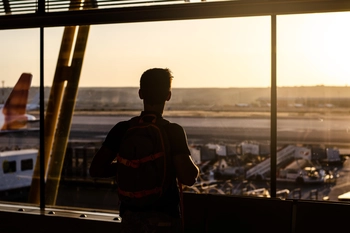






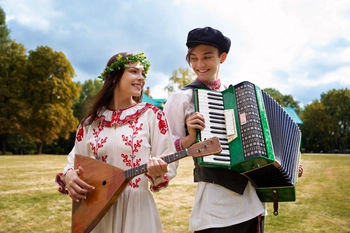

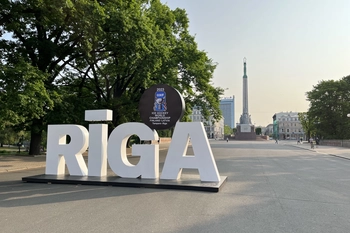
Leave a Comment
Your email address will not be published. Required fields are marked *